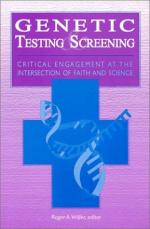|
This section contains 1,687 words (approx. 6 pages at 300 words per page) |

|
As scientific research reveals more information about treating diseases and maintaining good health, it has become increasingly important to identify diseases in their early stages in order to treat them most effectively. Thus, researchers have developed tests for some diseases to identify people at high risk for the disease before the symptoms of the disease actually appear. These tests are routinely administered to individuals in a defined population who have no apparent symptoms of the disease being screened. This process is called population screening. A primary goal of population screening is to predict with high accuracy which individuals in this group are at significant risk of developing or transmitting a disease. Once individuals at high risk for a disease are identified, confirmatory (diagnostic) tests are then performed to detect the screened-for disease with greater certainty.
Screening Versus Diagnostic Tests
Examples of routine population screening currently used...
|
This section contains 1,687 words (approx. 6 pages at 300 words per page) |

|


